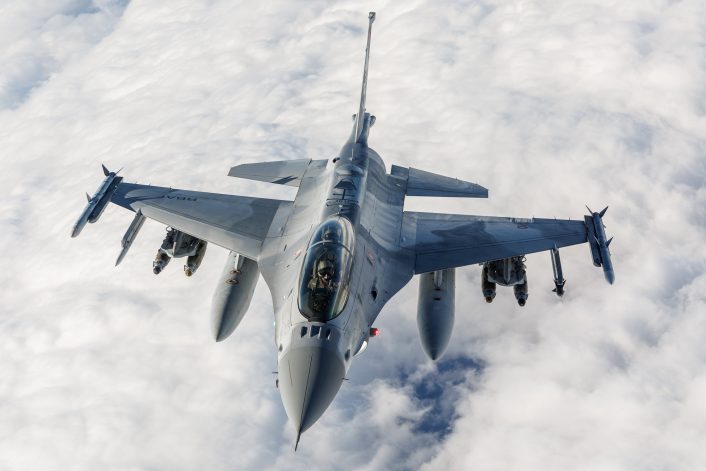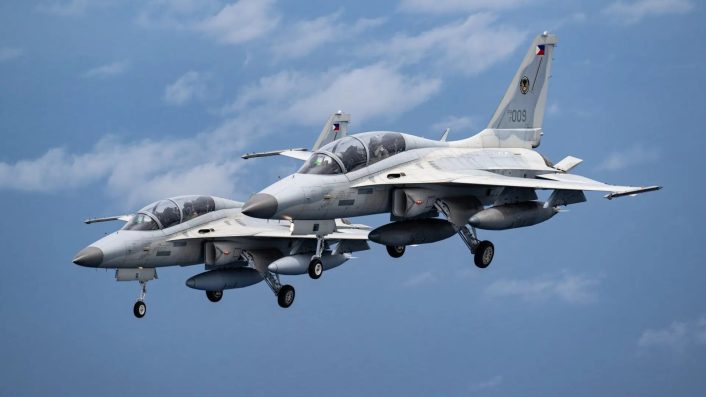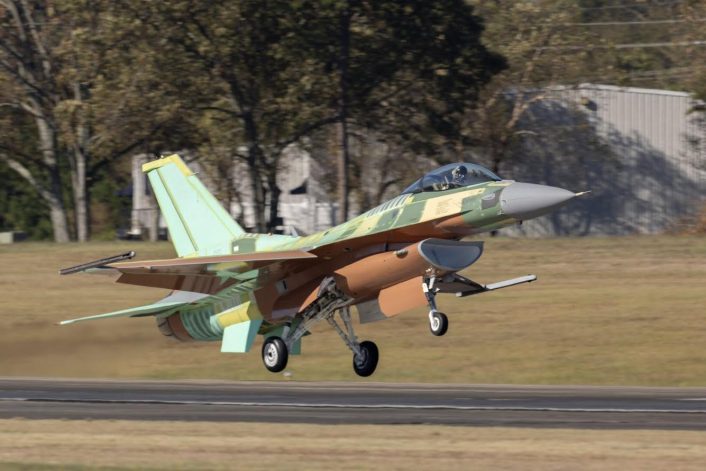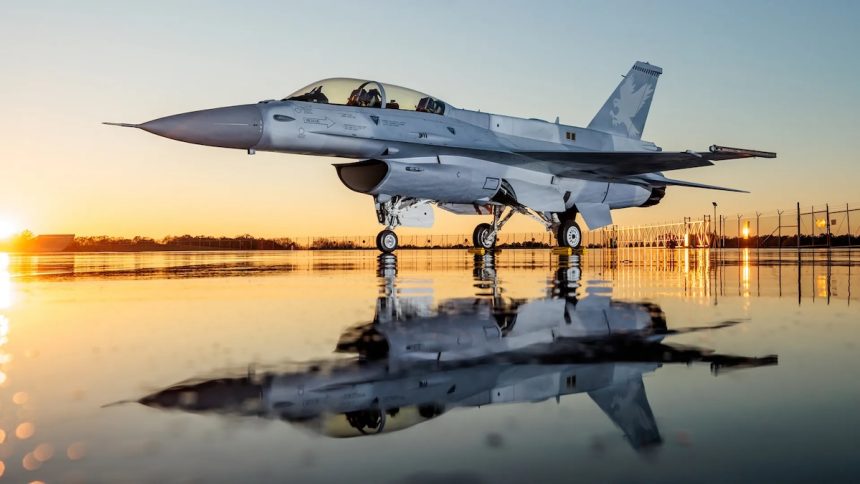Few days after U.S. Defense Secretary Pete Hegseth visited the Philippines, Washington cleared the sale of 20 F-16s to the country.
The U.S. State Department has approved the Foreign Military Sale (FMS) to the Philippines for 20 F-16 Block 70/72 fighter jets. The development comes just few days after U.S. Defense Secretary Pete Hegseth visited the Philippines amid growing tensions with China and the need to reinforce the deterrence posture as well as strengthening regional allies and partners.
This was also remarked in the notice published by the DSCA (Defense Security Cooperation Agency): “This proposed sale will support the foreign policy and national security of the United States by helping to improve the security of a strategic partner that continues to be an important force for political stability, peace, and economic progress in Southeast Asia.”
This is not the first time an F-16 FMS to the Philippines is authorized, as it already happened in 2021. In that occasion, the deal did not go through as the Philippines had only earmarked $1.1 billion for the procurement, which was worth $2.43 billion and included 12 aircraft.
The FMS
The deal is worth $5.58 billion and will include 16 single seater F-16C Block 70/72 jets and four twin seater F-16D Block 70/72 jets, which will be powered by either the F110-GE-129D (Block 70) or F100-PW-229 Engines (Block 72). The FMS notification includes a list of non-MDE (Major Defense Equipment) items which will be included, such as secure communications, spare part, test devices and various support equipment.
The aircraft will be equipped with AN/AAQ-33 Sniper Advanced Targeting Pods , AIM-120C-8 or equivalents and AIM-9X Block II Sidewinder air-to-air missiles, GBU-39/B Small Diameter Bombs, MK-82 500-lb and MK-84 2,000-lb general purpose bombs, with the Joint Direct Attack Munition (JDAM) kits for the conversion to GBU-38 or Laser JDAM GBU-54 as well a GBU-50 Enhanced Paveway II laser guided bombs. The AGM-65 Maverick will also be available for the F-16, although only the necessary LAU-117 and LAU-88 are included in the FMS as the weapon is already in service in the Philippines.

In addition to the choice between the Block 70 and Block 72, the FMS leaves to the Philippines also the choice for the Helmet Mounted Displays, either the Scorpion Hybrid Optical-based Inertial Trackers (HObIT) or the Joint Helmet Mounted Cueing Systems II (JHMCS II). With the aircraft being newly built, they will likely come with the Martin-Baker US18E ejection seat instead of the Collins ACES II. The FMS also includes the new AN/ALQ-254 Viper Shield electronic warfare (EW) suite or unspecified equivalent systems.
“The proposed sale will enhance the Philippine Air Force’s ability to conduct maritime domain awareness and close air support missions and enhance its suppression of enemy air defenses (SEAD) and aerial interdiction capabilities,” said the DSCA notice. “This sale will also increase the ability of the Armed Forces of the Philippines to protect vital interests and territory, as well as expand interoperability with the U.S. forces.”
The Philippines’ rearmament
The Philippines is in the middle of a series of procurements to reinforce its ranks amid continuing tensions in the West Philippines Sea. In fact, persistent clashes have been reported between Chinese and Philippines coast guard ships, when the latter runs supplies to the grounded Sierra Madre ship, now functioning as an outpost.
Earlier this year, it was reported that the country is considering the acquisition of an additional 12 KAI FA-50 Fighting Eagle light fighters, doubling its current fleet. Similarly, in December 2024, the Philippines decided to buy six additional A-29B Super Tucanos, also doubling this fleet.
Other current defense programs involve the modernization of the country’s cyber infrastructure, the acquisition of new air defense systems, and additional unspecified upgrades for the incoming Miguel Malvar-class corvettes. The F-16s would replace the fleet of F-5A/B that the country retired in 2005, the last frontline fighter jets it had in service.
Last year, Philippine Defense Secretary Gilberto Teodoro said the country approved a new plan named “Horizon 3”, which foresees the acquisition of 40 fighter jets with a $33.6 billion budget in a massive push to modernize the military. While the plan is still subject to congressional approval, the 20 F-16s might be the first batch of these 40 new fighters.

The F-16 Block 70/72
The F-16 Block 70/72 are the most advanced production Vipers, which are newly built as opposed to the F-16V which are existing aircraft upgraded to the same configuration. So far, six countries have selected the F-16 Block 70/72 and Lockheed Martin has a production backlog of 117 jets, as of February 2025.
Among the new systems installed during the upgrade we can find the APG-83 AESA (Active Electronically Scanned Array) radar, a new Center Pedestal Display (CPD), the AN/APX-126 Advanced IFF (Identification Friend or Foe), Link 16 datalink, full NVIS (Night Vision Imaging System) and JHCMS II (Joint Helmet-Mounted Cueing System II) compatibility, a new Embedded GPS/INS (EGI), a modern commercial off-the-shelf (COTS)-based avionics subsystem, a high-volume, high-speed data bus and the Automatic Ground Collision Avoidance System (Auto GCAS).
“The F-16 Block 70 is the latest edition of one of the most combat proven fighter jets of all time,” said Col. Thomas Obrochta, 162nd Operations Group commander, when the first Slovak F-16 Block 70 arrived at the Arizona ANG’s 162nd Wing. “It includes an advanced APG-83 Active Electronically Scanned Array [AESA] fire control radar, a high-resolution Center Pedestal Display, which provides critical tactical imagery to pilots and allows them to take full advantage of AESA and targeting pod data, advanced weapons integration, and an extended structural life of 12,000 hours– more than 50 percent beyond that of previous production F-16 aircraft.”

The APG-83 Scalable Agile Beam Radar (SABR), developed by Northrop Grumman, is an AESA (Active Electronically Scanned Array) radar designed to fit the F-16 with no structural, power or cooling modifications; in addition, it enables the F-16 to detect, track and identify a greater number of targets (reportedly more than 20 at the same time) faster and at longer ranges while providing all-weather, high-resolution Synthetic Aperture Radar (SAR) mapping. The system also integrated a robust electronic protection to operate in hostile electronic environments.
The Block 70 features a new cockpit concept, with the installation of a Center Pedestal Display (CPD), that provides the pilot with critical tactical data on a high resolution 6’’x8’’ screen. The new screen allows pilots to take full advantage of the new radar and targeting pod data, including new color moving map, a larger and easier representation of the air-to-air situational displays with zoom functionality and last but not least the ability to switch information among displays.









